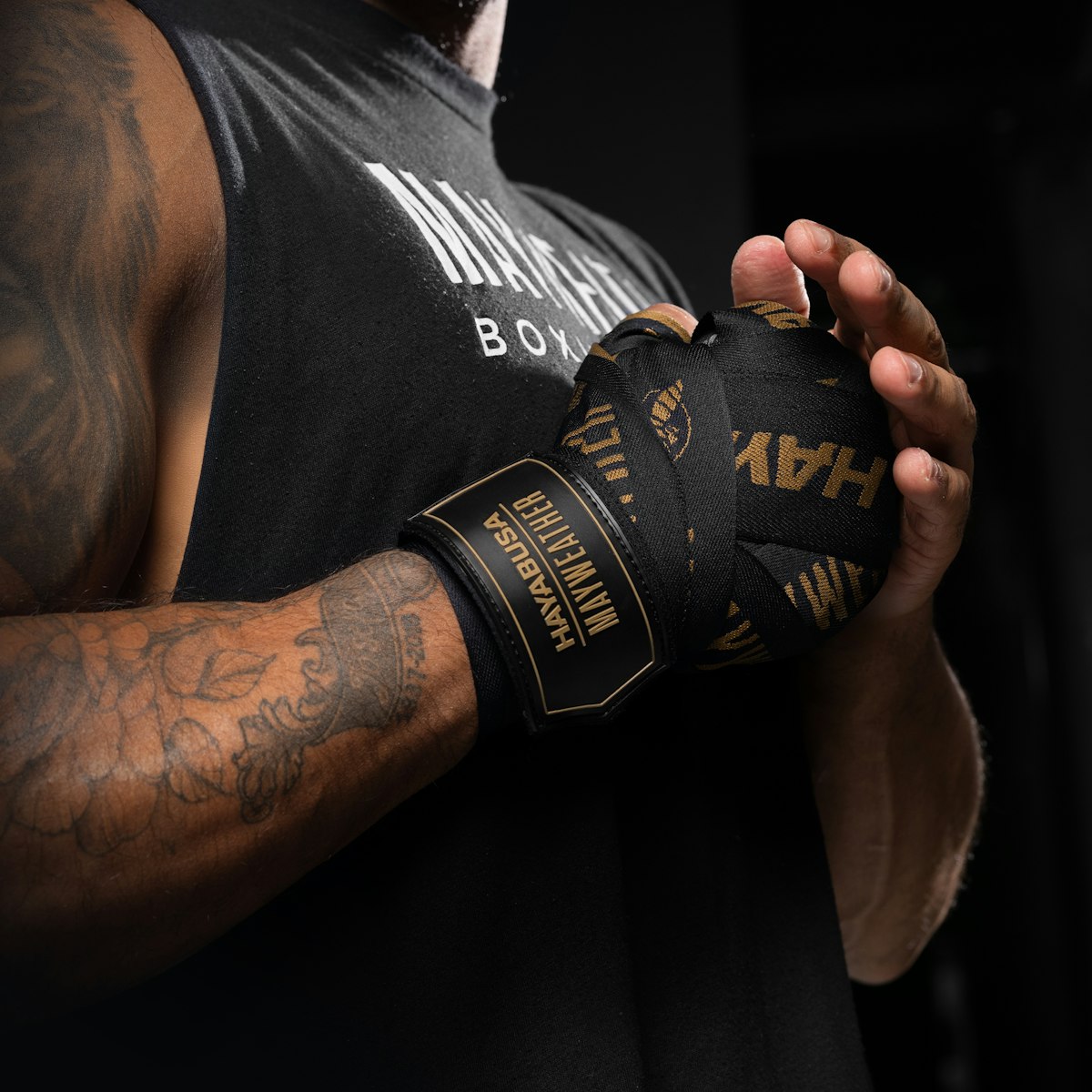Combining Hand Wraps with Workout Gloves: Smart or Dangerous?
An in-depth look at whether combining boxing hand wraps with workout gloves is smart or risky, exploring benefits, drawbacks, and expert advice for athletes.
When it comes to protecting your hands during training, athletes often debate whether to rely on workout gloves, boxing hand wraps, or even both at once. The idea of combining hand wraps with workout gloves sounds like it could offer the best of both worlds: support, comfort, and maximum protection. But is it really a smart practice, or could it actually be harmful in the long run? This article explores the pros, cons, and expert opinions on using hand wraps with workout gloves, and whether it’s the right choice for your training routine.

Why Athletes Use Hand Protection
Hand protection is a vital part of fitness, combat sports, and weightlifting. Our hands are constantly under stress from gripping bars, throwing punches, or carrying heavy loads. Without proper support, you risk calluses, blisters, joint strain, or even injuries that could keep you out of training.
-
Workout gloves are designed to provide cushioning, reduce friction, and enhance grip in weight training.
-
Boxing hand wraps stabilize the wrist and knuckles, keeping the small bones in your hands protected from impact during punches.
-
Weight lifting gloves focus on reducing pressure and improving performance during heavy lifts, often including wrist support.
All three play unique roles, but some athletes experiment by wearing boxing hand wraps under their workout gloves to maximize support.
The Case for Combining Boxing Hand Wraps with Workout Gloves
At first glance, doubling up seems like an excellent idea. By wrapping your hands tightly and then slipping on workout gloves, you gain multiple layers of protection.
Extra Wrist and Knuckle Support
Boxing hand wraps are known for keeping the wrist stable and shielding the knuckles. When combined with workout gloves, athletes feel more confident in their grip, especially during exercises like deadlifts, pull-ups, or heavy bag training.
Reduced Friction and Blister Prevention
Weight training often leads to painful calluses, especially on the palms. By wearing wraps underneath gloves, you create an additional barrier that absorbs sweat and reduces skin irritation. This is especially helpful for athletes with sensitive hands.
Enhanced Confidence and Mental Edge
Sometimes, the psychological boost of feeling “double protected” is just as important as the physical benefit. Many athletes report that combining hand wraps with workout gloves makes them feel stronger and more prepared for intense sessions.
The Potential Dangers of Using Wraps with Gloves
While the combination may sound ideal, it’s not without risks. In fact, some coaches discourage the practice altogether.
Reduced Grip Strength
Adding hand wraps under workout gloves can make your grip feel bulkier. This reduces bar control in exercises like deadlifts or pull-ups. Over time, relying on too much padding may even weaken your natural grip strength.
Risk of Over-Tightening
Boxing hand wraps are designed to be snug. When gloves are worn over them, the additional pressure can restrict blood flow to your hands. This may lead to numbness, tingling, or reduced performance during long workouts.
False Sense of Security
More protection doesn’t always mean better performance. Athletes may push harder than they should, assuming their hands are completely safeguarded. This can lead to strain on other joints, especially the elbows and shoulders.
Expert Opinions: Gloves vs Wraps vs Both
Coaches and trainers often emphasize that each type of hand protection has its own purpose.
-
Workout gloves are best for gym sessions, especially when lifting weights or using pull-up bars.
-
Boxing hand wraps are essential in combat sports, as they protect small bones and joints from impact.
-
Weight lifting gloves offer specialized designs for heavy lifts and Olympic-style training.
Most experts agree that combining boxing hand wraps with workout gloves is not necessary for the average athlete. Instead, choosing the right protection for the right activity is more effective and sustainable.
When Combining Hand Wraps and Workout Gloves Might Make Sense
Despite the drawbacks, there are certain cases where doubling up could be useful.
Rehabilitation and Injury Recovery
If you’re recovering from a hand or wrist injury, wearing both wraps and gloves may provide added stability. However, this should only be done under professional supervision.
Hybrid Training Sessions
Some athletes train in both combat sports and weightlifting on the same day. In such cases, wraps might already be on from boxing, so sliding workout gloves on top for lifting may seem convenient.
Sensitive or Easily Injured Hands
For individuals prone to skin tears, blisters, or weak wrists, doubling up may offer comfort. But again, it should be done carefully, ensuring blood circulation isn’t compromised.
Smart Alternatives to Combining Wraps and Gloves
Instead of stacking two types of gear, many athletes may benefit from choosing advanced or hybrid options:
-
Workout gloves with built-in wrist support provide stability without the need for wraps.
-
Weight lifting gloves with extra padding can help reduce calluses while improving grip strength.
-
Quick wraps offer the wrist stability of boxing hand wraps but are easier to wear and less bulky under gloves.
These alternatives often achieve the same goals without the risks of doubling up.
Final Verdict
So, is combining boxing hand wraps with workout gloves smart or dangerous? The answer depends on your training goals and physical needs. For most athletes, it’s unnecessary and could even harm grip strength or circulation. However, in special cases such as injury recovery or hybrid workouts, it may provide short-term benefits. The smarter long-term strategy is to choose the right protection for the right sport. Workout gloves excel in the gym, boxing hand wraps are essential for combat training, and weight lifting gloves deliver the grip and support needed for heavy lifts. Mixing them should be done cautiously and only when truly necessary.